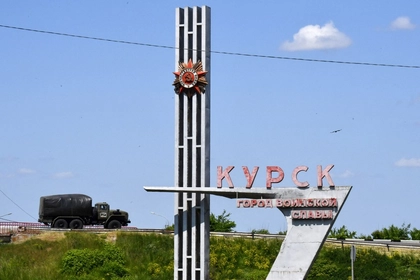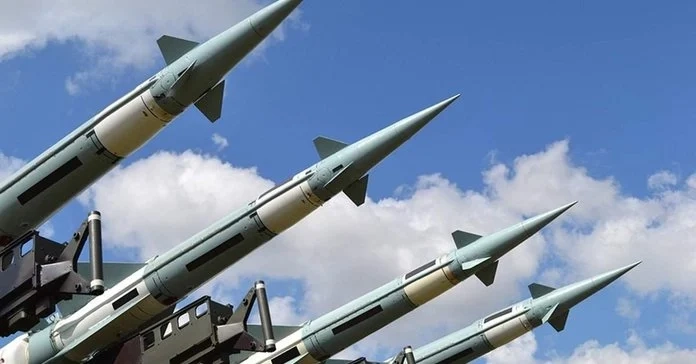During the early hours of the Russo-Ukrainian War, when it became clear that Vladimir Putin was mounting a full scale invasion, rather than just a much anticipated minor incursion, most, though not all, of the leading players in Euro-Atlantic political, military, academic and media circles took to the airwaves to make some rather dire forecasts and to dispense equally dire advice to the Ukrainians.
It was predicted that border cities in the north and east, as well as coastal cities in the south, might fall within a day or two and that the capital Kyiv would be forced to surrender within a week. President Zelensky was advised to move the seat of government to Ukraine’s westernmost large city, Lviv, or, better yet, to set up shop in exile. The Ukrainian armed forces, in turn, were told to head for the Carpathian Mountains and convert to insurgency-style warfare.
JOIN US ON TELEGRAM
Follow our coverage of the war on the @Kyivpost_official.
As the hours turned into days, it became apparent that the dire predictions of swift failure might be off base and that the grim advice given to the Ukrainian government to evacuate was premature. The northern and eastern cities like Kharkiv, Sumy, Chernihiv and Zhytomyr had held strong. And among the port towns on the Black or Azov seas like Odesa, Mykolayiv, Kherson and Mariupil, only Kherson was occupied, and its occupation was proving to be no certain fact, given that thousands of Ukrainians in the coastal city were staging protests against the Russian invaders.

‘Its Final Phase’– Russia Claws Back Territory in Kursk Region, Advances Into Sumy
Meanwhile the dreaded quick drive into Kyiv seemed stalled after preparatory air assaults on the airports of the capital had not worked out as planned. With this in mind, President Zelensky not only decided to stay in Kyiv but opted to use his office on Bankova in the center to give daily briefings to the Ukrainian nation as a gesture of defiance. As the days turned into weeks, the dire predictions were proving to be shockingly wrong, and the advice to abandon Kyiv truly ill conceived.
In the south, a fierce battle in Mykolayiv had not only held up any advance to Odesa but had thrown the Russian forces back upon Kherson. In the east, the attack on Kharkiv had gone badly enough to warrant a decision by Russian forces to bypass it. And in the north, the Russians had begun a “grand re-positioning” in city after city, including Kyiv itself, in what looked like a not so grand withdrawal.
Meanwhile, Zelensky was proving audacious enough to turn his briefings to the nation into walking tours of Kyiv. He also took to using zoom webinars with various friendly governments to drum up support and assistance for Ukraine’s defense needs and to assure them that his government was firmly in control of matters in Kyiv.
Disbelief, embarrassment as Ukraine defies Western predictions of defeat
The unfolding of the aforementioned cascade of events initially elicited disbelief in the West: Can we verify the reports? This was followed by a period of skepticism: Maybe the Russians have not fully committed yet? Finally, there was a full throated admission of astonishment – when Russian forces actually began leaving the northern cities.
And once astonishment and amazement entered the picture, an inevitable moment of self-reflection occurred. The Western media turned back to its pundits and to the myriad of “experts” from political, military and academic circles in the Euro-Atlantic
community – indeed, in the global democratic community in general. The question asked of them was a thoroughly blunt one: How could all of you have gotten things so wrong?
The question launched a veritable tsunami of mea culpas. Media outlet after media outlet witnessed a gnashing of teeth followed by a lot of swallowing of pride. A whole series of graphics showing “the glorious Russian army” advancing along the entire northern front were suddenly pulled off countless screens accompanied by apologies from various analysts who had been ceding Ukrainian territory to the enemy. The only voices that were exempted from the self-flagellation were those few doubting Thomases, essentially American generals with actual experience in commanding US or NATO troops in Europe during the last three decades, who from the beginning had raised the question: Does Putin really think that he can take all of Ukraine with 200,000 troops when it would take 300 thousand just to capture and hold Kyiv?
As it turned out, once the self-flagellation subsided, or the Western media got tired of simply beating up on its own, the very same commanders were allowed to ask a follow up set of questions: Were the Russians really this bad? And was it possible that the Russian army was only suited for parades on Red Square to celebrate World War II Victory Days? The new questions coincided with news that Russia’s repositioning gambit was turning into an open, headlong retreat from all points north in Ukraine, leaving a set of atrocities on full display to be judged in the future as war crimes. At that moment, the narrative that Russia had proved to be weaker than
expected leapt into the lead by a wide margin.
Competing narratives
While the weak Russia storyline firmly took hold of the air waves, another narrative quietly and tenuously appeared alongside. The parallel narrative took to shifting the center of attention from Russia’s foibles in the war to the astounding resourcefulness and resilience that the Ukrainians were exhibiting – an intriguing minor miracle, given that Ukraine until that point had been treated as an object rather
than as a subject capable of having an impact of its own on matters.
Equally intriguing and important, the most impressive version of the new storyline was one that placed the do-or-die tenacity of the Ukrainian armed forces – in contrast to the undisciplined childlike behavior of the Russian military – in a firmly historical context. The cited seminal experience was the Mongol invasions of 1239-1241. Unlike the Eastern Slavic city-states of the north, including the newly
minted Moscovy, all of whom submitted to the yoke of the Khans for the next two hundred years, Kyivans fought to the bitter end and endured a Carthage-like destruction of their beloved city state nestled on the shores of the northern Dnipro only to emerge an identical two centuries later in the southern Dnipro river basin as the Zaporizhian Cossacks (from the Turkic word for freemen)
Though clearly an insightful construct, the tenacious-and-resilient-Ukrainian narrative was unable to gain altitude, because in a matter of days the Russians indicated that they were no longer interested in the Ukrainian cities in the north or east, or for that matter, by omission, the southern cities beyond Kherson, either. Their objective, they now said, had always been and remained the Donbas: i.e., attaching the Ukrainian-held territories in the region to the unrecognized Moscow puppet states of DNR and LNR.
There was no admission by Russia of any errors or flaws in their mission. Rather, the Kremlin in a matter of fact tone explained that, in the first phase of the war, the task was to exhaust the Ukrainian forces thoroughly throughout Ukraine. In phase two, we were told, Russian forces would break through the Ukrainian defenses in Izyum in northern Donbas, do the same in Mariupil in southern Donbas, proceed to encircle the Ukrainian forces in central Donbas, fight a classic tank-on tank-battle in a category they excel in, and ultimately seize control of the entire area in the aftermath. Or, as the Western media quaintly summarized the emerging headline of the war: “The Russians are finally getting down to business!”
You can also highlight the text and press Ctrl + Enter











